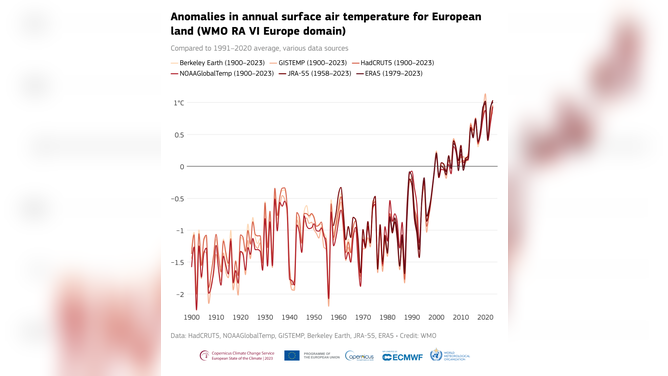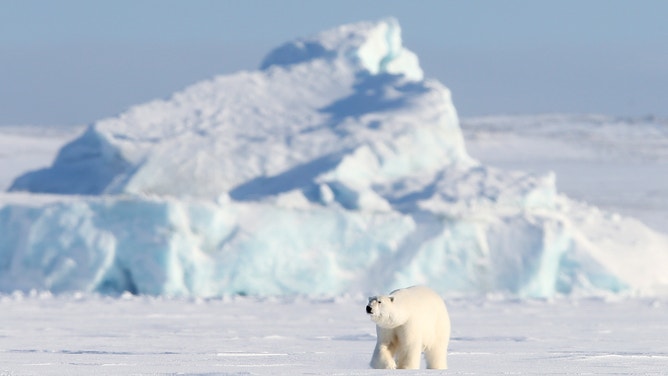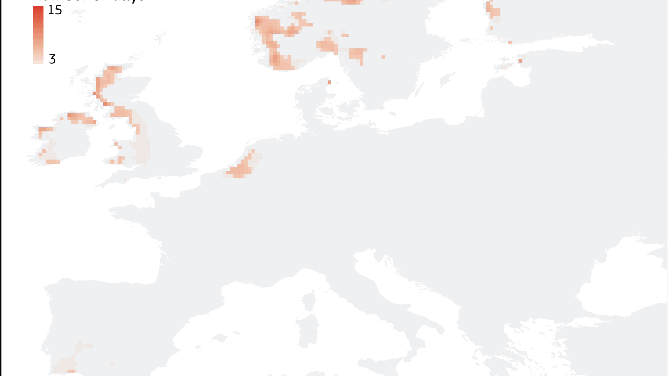World
Europe warming almost twice as fast as global average, report says

Europe is the fastest warming continent on Earth, the 2023 European State of the Climate report (ESOTC) published Monday revealed.
“Since the 1980s, Europe has been warming twice as fast as the global average, becoming the fastest-warming continent on Earth,” said the joint report from the World Meteorological Organization and Copernicus Climate Change Service (C3S), the Earth observation unit of the European Union’s space program.
In 2023, Europe tied 2020 for its warmest year on record. The most above-average temperatures were in the European Arctic, and the continent’s sea surface temperatures were the warmest on record. In June, a marine heat wave was classified as “extreme” and “beyond extreme” in some areas around the Atlantic west of Ireland and around the U.K.
GLOBAL TEMPS EXCEED CLIMATE-CHANGE BENCHMARK FOR FIRST TIME
“This (record warmth) is due to several factors, including the proportion of European land in the Arctic, which is the fastest-warming region on Earth, and to changes in atmospheric circulation that favor more frequent summer heatwaves,” the ESOTC continued.
Europe includes Greenland, the South Caucuses and part of the Middle East in WMO data.
The continent was 2.6 degrees Celsius (4.68 degrees Fahrenheit) above pre-industrial levels and 1 degree C (1.8 degrees F) warmer than in the past 30 years. The global average temperature in 2023 was 1.45 degrees C (2.61 degrees F) above the pre-industrial average and 0.6 degrees C (1.08 degrees F) warmer than the recent average.
Part of a trend
The three warmest years on record have all occurred since 2020. The 10 warmest years have all occurred since 2017. Since the early 90s, Europe has been warming around 0.5 degrees C (0.9 degrees F) per decade, outpacing the global average of 0.2 degrees C (0.36 degrees F).
2023 FINISHES AS WARMEST YEAR ON RECORD

Annual surface air temperature anomalies over European land, from a range of datasets, for 1900 to 2023 (start year varies by dataset), relative to the average for the 1991–2020 reference period.
(WMO / FOX Weather)
More than 75% of the continent’s most severe heat waves since 1950 have been since the turn of the century. Three of the deadliest have occurred in the last 5 years. That also contributed to the explosive wildfires across Europe, one in Greece was the largest ever on the continent.
Melting ice
Warmer air temperatures, along with warmer sea temperatures, led to accelerated melting of sea ice. Less snow in the mountains and a warmer summer also resulted in glaciers shrinking. In just two years, glaciers in the Alps lost 10% of their volume.
Glaciers around the world set a new record water loss of 600 gigatonnes in 2023, 100 gigatonnes more than any other year. One gigatonne weighs 2.2 trillion pounds, or the equivalent of 10,000 fully loaded U.S. aircraft carriers, according to NASA. One gigatonne of ice on New York’s Central Park would be more than 1,000 feet high.
About 70% of the world’s freshwater is locked in ice. As that ice melts, ocean temperatures change, which actually changes weather patterns.
HOW SCIENTISTS BELIEVE THE LOSS OF ARCTIC SEA ICE WILL IMPACT US WEATHER PATTERNS

File: A polar bear is seen in the Franz Joseph Land archipelago in the Arctic Ocean.
(Gavriil GrigorovTASS / Getty Images)
“Sea surface temperature (SST) can be used to understand the flows of energy between the ocean and atmosphere, and hence the role of the oceans in shaping the weather and climate,” stated the report. “
“The large-scale movement of air, and associated changes in air pressure, redistributes thermal energy and moisture,” the report continued. “It drives weather patterns, which shape many climate variables, and can itself be influenced by climate change.”
Year of weather extremes
The year was punctuated by weather extremes between heat waves and flooding storms.
“The year, as you know, has globally been extremely unusual, especially when compared with the climate of the last few decades, centuries, or even millennia,” said Carlo Buontempo, director of C3S. “So some of the events of 2020 through 2023 took the scientific community by surprise because of their intensity, their speed, onset, extent and duration.”

Extreme weather events in 2023.
(WMO and C3E / FOX Weather)
February stayed warm and dry under high pressure over western Europe, which translated to warmer and drier than average conditions. A switch in March led to a high shifting over the Iberian Peninsula, translating to a prolonged drought from March to May. Meanwhile, northwestern Europe was drenched. The cold air was locked up over the Nordic countries.
The marine heatwave brought wetter-than-average conditions to Spain and Portugal in June and warm, dry conditions to northwestern Europe. By July, that reversed, and warm air was anchored over Greenland, translating to snow and ice melt.
The WMO declared a public health emergency in July for the very first time due to the extreme heat across parts of the continent.
Europe saw a record number of “extreme heat stress” days with ‘feels like’ temperatures above 115 degrees F.
EUROPE OFFICIALLY SET NEW RECORD IN 2023 FOR CONTINENT’S HOTTEST TEMPERATURE EVER

Heatwaves (days) from June to September 2023. Here, a heatwave is defined as a period of at least three consecutive days when both the daily surface air temperature minima and maxima are above the 95th percentile of the daily values, based on the 1991–2020 reference period.
(C3S/ECMWF / FOX Weather)
By winter, the west-to-east upper air wind pattern brought huge storms to northwest Europe and significant flooding and damaging winds. The opposite occurred in the Western Mediterranean. September’s Storm Daniel brought a year’s worth of rain to parts of Greece in one day.
“In Europe, there is an increasing trend in the frequency and temperature of warmer-than-average days and nights, and in the frequency and intensity of heat waves and extreme precipitation events,” stated the ESOTC report. “In southern Europe in particular, agricultural and ecological drought events are also increasing. Such increases in the number and severity of some extremes are already having an impact on health and wellbeing.”
The World Health Organization is still working on final numbers for 2023, but in 2022, heat-related injuries claimed 62,000 lives, according to a study in the Lancet.
“Heat-related mortality has increased by around 30% in the past 20 years,” said the ESOTC. “Between 2000 and 2020, heat-related deaths are estimated to have increased in 94% of the European regions monitored.”
Heat was the top extreme weather killer in Europe.










